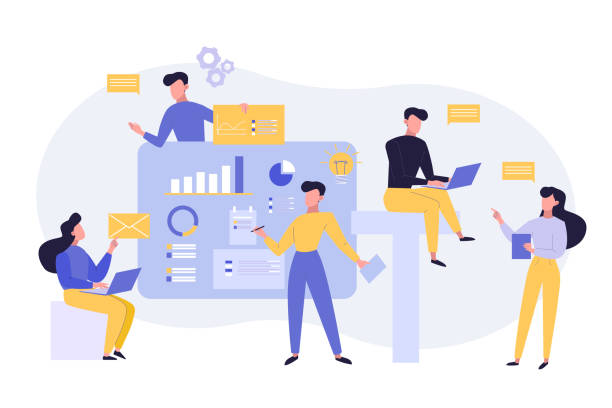Introduction to the Importance of Fast Website Design

In today’s digital world where speed is paramount, having a high-speed website is not just an advantage, but a necessity.
#Fast_Website_Design is no longer a luxury option, but a foundation for the success of any online business.
Internet users enter websites with high expectations; they want to get information instantly, and any delay can lead to the loss of potential customers.
A slow website not only provides a poor user experience (UX) but also negatively impacts your ranking in search engines like Google.
Studies show that even a one-second delay in page load time can lead to a significant decrease in conversions and an increase in bounce rate.
Therefore, focusing on website loading speed from the very beginning of the design and development process is crucial.
This explanatory section will help you understand the importance of this topic and why you should invest your time and resources in speed optimization.
This is a smart investment for the future of your business.
Losing business opportunities because of an outdated website? With Rasawwb, solve the problem of not attracting potential customers through your website forever!
✅ Attract more high-quality leads
✅ Increase brand credibility in the eyes of customers
⚡ Get free corporate website design consultation
Why Load Speed is Crucial for SEO and User Experience?
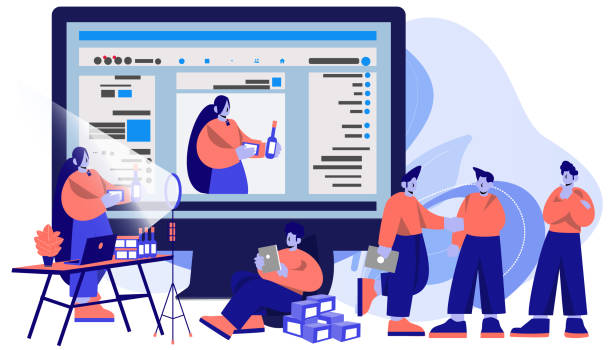
Website loading speed plays a pivotal role in SEO (Search Engine Optimization) strategies, as well as in providing an outstanding user experience.
From an SEO perspective, search engines like Google consider page speed as an important ranking factor.
Faster websites typically achieve higher rankings in search results, which means greater visibility and more organic traffic.
Google’s algorithms are increasingly emphasizing Core Web Vitals (critical web metrics) such as LCP (Largest Contentful Paint), FID (First Input Delay), and CLS (Cumulative Layout Shift), all of which are related to the speed and visual stability of pages.
On the other hand, user experience is of paramount importance.
Modern users are not patient.
They expect pages to load in less than a few seconds.
If your website is slow, users will quickly leave the page and look for faster alternatives.
This not only increases the bounce rate but also negatively impacts your brand image.
A fast website increases user engagement, boosts the Conversion Rate, and ultimately improves customer satisfaction.
Fast website design means investing in the future of your business and ensuring easy access for users to your content.
Main Factors Affecting Website Load Speed and Solutions
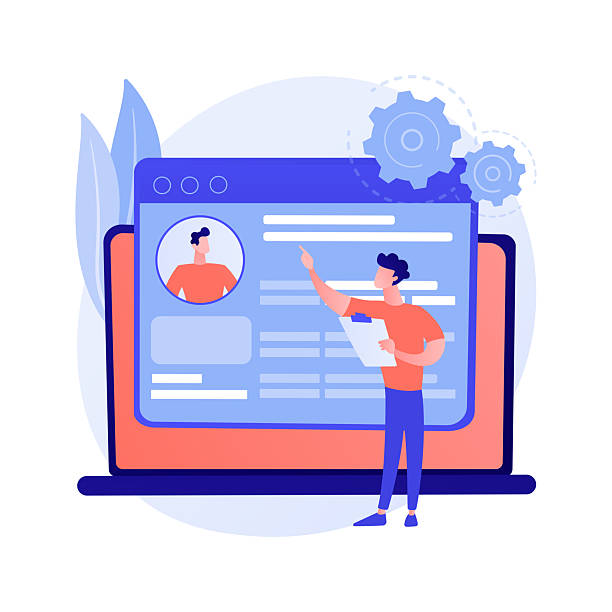
Understanding the factors that affect your website’s load speed is the first step towards optimization and achieving fast website design.
This specialized section examines these factors and provides practical solutions to overcome them.
One of the most important factors is hosting quality.
Choosing a reputable and high-speed hosting provider, with powerful and optimized servers for your website, is the foundation of speed.
Images and media files can also severely slow down a site.
Optimizing the size, format (such as WebP), and compressing images without loss of quality is crucial.
Using a Content Delivery Network (CDN) to deliver content from the closest server to the user significantly reduces load time.
Excessive and unused CSS and JavaScript codes, as well as heavy fonts and too many plugins, can all create overhead.
Code minification and file concatenation, using server-side and browser caching, and database optimization are other important measures that help accelerate loading.
| Factor | Description | Optimization Solution |
|---|---|---|
| Hosting (Web Host) | Server quality and geographical location | Choosing a high-speed and reliable hosting |
| Images and Media | Size, format and compression | Image optimization (WebP, compression) and Lazy Load |
| CSS and JavaScript files | Size, number of requests | Minification, file concatenation, Defer/Async |
| Caching | Temporary content storage | Activating server-side and browser caching |
| Database | Volume and query optimization | Regular database optimization |
| CDN (Content Delivery Network) | Content distribution from the closest server | Using a reputable CDN |
Implementing these solutions will help you have a fast and efficient website design.
Choosing the Right Platform for Your Fast Website Design

Choosing the right platform for fast website design is one of the key decisions at the outset.
This choice directly affects development speed, future features, and, of course, the final speed of your website.
Content Management Systems (CMS) like WordPress, Joomla, or Drupal are popular options that allow building websites without deep coding knowledge.
WordPress, with its vast ecosystem of plugins and themes, makes it possible to quickly launch and optimize a site.
However, choosing the wrong theme or excessive use of heavy plugins can reduce site speed.
Website Builders like Wix or Squarespace are also options that allow users to create beautiful websites with a drag-and-drop approach.
These platforms are usually great for initial simplicity and development speed, but may have limitations in terms of flexibility and full control over speed optimization.
For larger projects requiring high customization, custom coding using frameworks like React, Vue.js, or Angular for the frontend and Node.js, Python, or PHP for the backend provides complete flexibility.
Although this method requires more expertise and is more time-consuming, it ultimately offers greater control over performance and speed optimization.
It’s important to choose a platform that meets your current needs and also has the potential to create a high-speed site in the long run.
Does losing customers who visited your site to buy bother you?
Rasawwb is your specialized solution for having a successful online store.
✅ Significantly increase your online sales
✅ Build trust and professional branding with customers⚡ Get free consultation from Rasawwb specialists!
Optimizing Images and Media Files for Maximum Performance
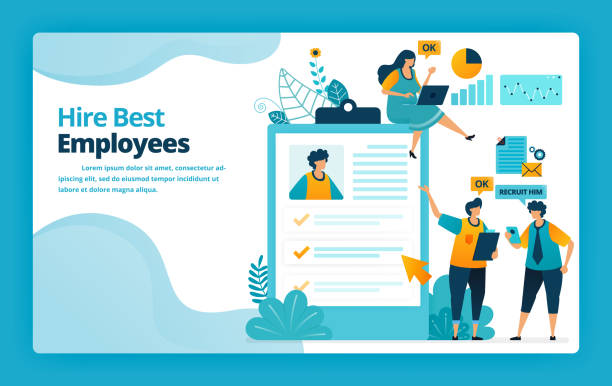
One of the biggest factors slowing down websites is unoptimized images and media files.
To achieve fast website design, precise optimization of these elements is essential.
First, make sure images are used with appropriate dimensions for web display; there’s no need to display a 4000-pixel image in a 200-pixel space.
Second, use modern and optimized image formats like WebP, which offer much better compression than JPEG and PNG, without significant loss of quality.
Online tools and WordPress plugins (like Smush or EWWW Image Optimizer) can automatically compress your images and convert them to more optimized formats.
Third, use Lazy Loading for images and videos.
This technique ensures that images and videos are loaded only when the user scrolls to the relevant section of the page, rather than loading all content at once when the page initially loads.
This has a significant impact on initial load speed, especially for long pages with a lot of visual content.
Also, using the `alt` tag for images is not only important for SEO but also helps browsers specify image dimensions before full loading and prevent Layout Shift.
These specialized actions and guidelines will help you keep your website visually rich and yet very fast.
Frontend and Backend Code Optimization Techniques for High Speed

A website’s speed depends not only on its content but also on the quality of its underlying code.
For fast website design, we need optimizations on both the frontend (code executed in the user’s browser) and the backend (code executed on the server).
On the frontend, one of the most important actions is Minification (compression) of CSS and JavaScript files.
This process involves removing extra characters like whitespace, comments, and newlines, which reduces file size and increases their loading speed.
Also, combining CSS and JavaScript files into one or fewer files reduces the number of HTTP requests, which is itself an important factor in increasing speed.
Using Defer and Async attributes for JavaScript scripts can also delay their execution so that the main content of the page loads faster.
On the other hand, database optimization is crucial in the backend.
Ensure that database queries are efficient and that appropriate indexing is used for tables.
Using server-side caching systems (like Redis or Memcached) can significantly reduce server response time, as frequently accessed content is read from the cache memory instead of being fetched from the database every time.
Optimizing web server settings (like Nginx or Apache) and using modern communication protocols like HTTP/2 also helps improve overall performance.
These specialized and explanatory actions ultimately lead to a comprehensive and effective website speed optimization.
Key Tools and Metrics for Measuring Website Speed

To ensure that your efforts in fast website design have been fruitful, you need accurate tools for measuring and monitoring speed.
This analytical section introduces you to how you can evaluate your website’s performance.
Google PageSpeed Insights is one of the most popular tools that provides performance scores for desktop and mobile and offers suggestions for improvement.
GTmetrix is also a powerful tool that provides detailed information about the load time of each element on the page and performance scores, along with a waterfall chart showing the order of resource loading.
Lighthouse, integrated directly into the Chrome browser, provides a comprehensive report on performance, accessibility, best practices, SEO, and PWA (Progressive Web App).
| Metric | Description | Importance for Speed |
|---|---|---|
| First Contentful Paint (FCP) | Time to display the first visual element on the page | Indicates the start of user experience |
| Largest Contentful Paint (LCP) | Time to display the largest content element | A critical metric for understanding core load speed |
| First Input Delay (FID) | Time the browser takes to respond to the first user interaction | Indicates the interactivity and responsiveness of the site |
| Cumulative Layout Shift (CLS) | Amount of visual element shifting during loading | Indicates visual stability and prevents unintentional clicks |
| Time to Interactive (TTI) | Time for the page to become fully interactive for the user | Important for interactive websites |
Understanding these metrics and continuously using these tools will help you constantly monitor and optimize the status of your high-speed website.
This is a continuous guidance approach to performance improvement.
Common Mistakes in Fast Website Design and How to Avoid Them

Despite the growing importance of speed, many developers and website owners still make mistakes that severely impact site performance.
This section, with a questioning and guidance-oriented approach, examines these common mistakes and how to avoid them to ensure a fast website design.
Did you know that choosing a cheap and low-quality hosting can nullify all your speed optimization efforts? Poor hosting is a bottleneck that even the most optimized codes and images cannot overcome.
Excessive use of plugins and third-party scripts, especially in CMSs like WordPress, is another common mistake.
Every new plugin or script means more code, more HTTP requests, and more server resources. Have you forgone any plugin you don’t need? Failure to optimize images and media is also one of the biggest errors.
High-volume images can add hundreds of kilobytes or even megabytes to the page size. Are you using image compression tools and Lazy Loading? Ignoring caching is also a big mistake.
Without proper caching, your server is forced to process all content from scratch every time a user visits the page. Have you used a strong caching system? Finally, the lack of regular website speed testing and monitoring is a mistake that prevents the discovery of hidden problems.
Do you periodically check your site’s speed with the tools introduced in the previous section? By avoiding these mistakes, you can more effectively contribute to your website loading speed.
Tired of losing business opportunities due to not having a professional corporate website? Worry no more! With Rasawwb’s corporate website design services:
✅ Your brand’s credibility and professionalism will increase.
✅ You will attract more customers and sales leads.
⚡ Get a free consultation now to start!
Future Trends and Innovations in High-Speed Website Design
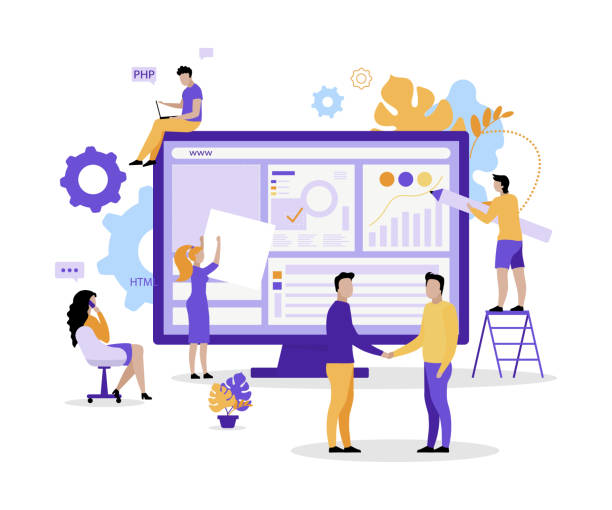
The world of web is constantly evolving, and with the emergence of new technologies, fast website design is also moving towards more innovative directions.
This news and entertaining section explores future trends that not only improve speed but also transform user experience.
One of the most important future trends is Progressive Web Apps (PWAs).
PWAs are websites that can be installed like a mobile application, have offline capabilities, and offer a very smooth user experience.
This technology, using Service Workers, caches resources and makes subsequent loads incredibly fast.
Another trend is the wider use of Accelerated Mobile Pages (AMP), designed by Google to deliver content on mobile with incredibly high speed.
Although AMP has been controversial, it is very effective for news content and blogs.
Serverless architecture, as a new approach in backend development, also allows developers to run code without needing to manage servers, which can lead to greater scalability and speed in responsiveness.
Also, Artificial Intelligence (AI) will play an increasing role in optimizing website performance; from automatic optimization of images and codes to predicting user behavior for proactive content loading.
These innovations promise that the future of the web will not only be faster but also smarter and more interactive.
Fast website design in the future will depend more than ever on leveraging these new technologies.
Business Impact and ROI of a High-Speed Website

Ultimately, all efforts for fast website design must lead to a return on investment (ROI) and business objectives.
This analytical and explanatory section examines the direct impact of website speed on business performance and long-term success.
A high-speed website directly impacts your conversion rate.
The faster the page loads, the more likely the user is to complete a purchase, registration, or any other desired action.
A delay in loading can mean losing customers and, consequently, reduced revenue.
Furthermore, site speed also affects your brand’s credibility.
A website that operates quickly and smoothly presents a professional and trustworthy image of your business, while a slow site can lead to user frustration and skepticism.
From a digital marketing perspective, site speed is an important competitive factor.
In today’s crowded markets, even a small advantage in speed can set you apart from competitors and attract more traffic.
Also, your advertising costs are optimized; because a lower bounce rate and higher conversion rate mean your advertising budget is used to attract more genuine customers.
Ultimately, fast website design is not just a technical necessity, but a powerful business strategy that helps increase sales, improve customer loyalty, and ensure sustainable growth for your business.
Investing in speed is investing in success.
Frequently Asked Questions
| Question | Answer |
|---|---|
| What is fast website design? | A process for building a website that loads quickly and provides a smooth and optimized user experience. |
| Why is website speed important? | Increased user satisfaction, improved search engine ranking (SEO), reduced bounce rate, and increased conversion rate. |
| What factors affect website speed? | Page size, number of HTTP requests, image optimization, JavaScript and CSS codes, server speed, and caching. |
| How can website speed be measured? | Using tools like Google PageSpeed Insights, GTmetrix, Pingdom Tools. |
| How can website speed be increased? | Image optimization, file compression (CSS, JS, HTML), browser caching, reducing redirects, choosing appropriate hosting. |
| Does fast website design mean low quality? | No, fast design means designing with a focus on speed and efficiency optimization, not reducing the quality of design or content. |
| What is the role of hosting in website speed? | The speed and quality of the hosting server directly impact the website’s response time and consequently the loading speed. |
| How can images be optimized for speed? | Using appropriate formats (like WebP), compressing images without significant quality loss, specifying definite dimensions for images. |
| Can complex websites also be fast? | Yes, by using appropriate architecture, code optimization, and resource management, even complex websites can have high speed. |
| Is fast website design the same as Agile development? | No, fast website design focuses on the final outcome (a fast website), whereas Agile development is a methodology for project management and software development. |
And other services of Rasawwb Advertising Agency in the field of advertising
Smart Sales Automation: A specialized service for increasing website visits based on attractive UI design.
Smart Custom Software: Transform digital branding with the help of attractive UI design.
Smart Reportage: A fast and efficient solution for increasing website visits, focusing on Google Ads management.
Smart Brand Identity: Designed for businesses looking to increase sales through attractive UI design.
Smart Google Ads: A combination of creativity and technology to improve SEO ranking through custom programming.
And over hundreds of other services in the field of online advertising, advertising consultation, and organizational solutions
Internet Advertising | Advertising Strategy | Advertorial
Resources
WordPress Website Design Tutorial
10 SEO Tips for Your Website
How to Have a Successful Online Store
Comprehensive Guide to Increasing Website Speed
❓ For your business to be seen and grow in the digital world, Rasawwb Afarin Digital Marketing Agency is with you. From custom website design to SEO optimization and advertising campaign management, we pave your path to success.
📍 Tehran, Mirdamad Street, next to Bank Markazi, Southern Kazeroon Alley, Ramin Alley No. 6



